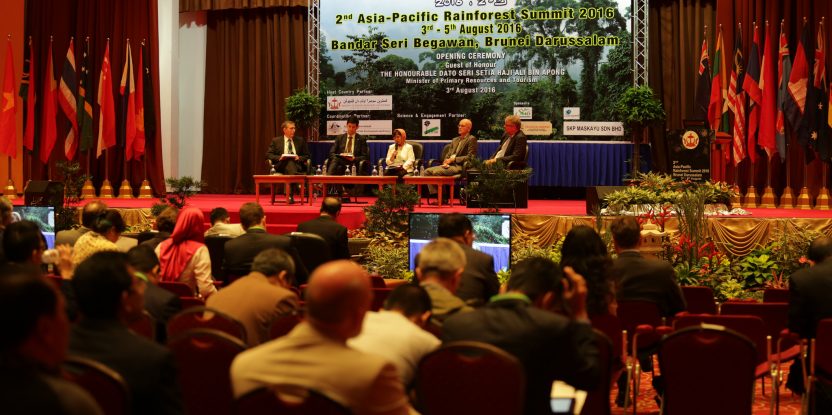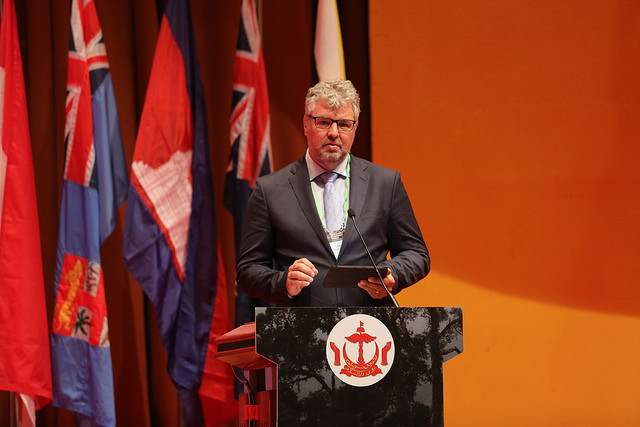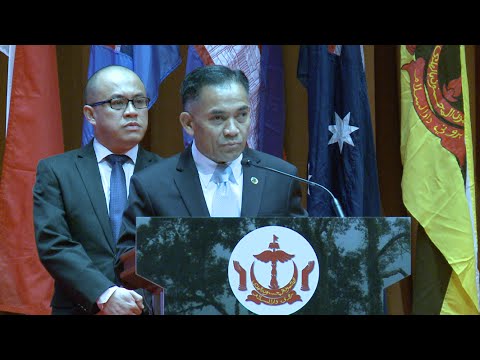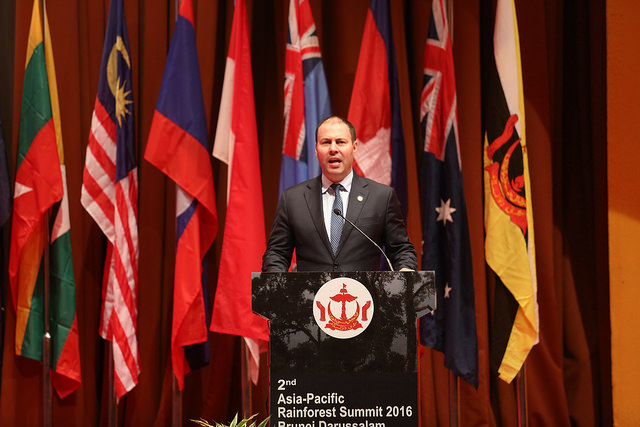
BANDAR SERI BEGAWAN, Brunei Darussalam — Integration was the key concept driving discussion among government, business, civil society and research stakeholders at the 2016 Asia-Pacific Rainforest Summit, held from 3-5 August in Bandar Seri Begawan, Brunei Darussalam.
The gathering of more than 300 participants brought perspectives from across geographic and sectoral boundaries to discuss ways toward a more integrated approach to forests, people and the region.
In his opening address, CIFOR Director General Peter Holmgren highlighted the many areas where integration was necessary to achieve sustainable management of the region’s rainforests, from integration of economic, environmental and social aspirations to finding the connections between climate change action and the global sustainable development agenda.
“The common denominator that brings us together is landscapes. Landscapes with a wide diversity in shapes and sizes will be a cornerstone for the future we want,” Holmgren said.
Governments from across the Asia-Pacific region voiced their perspectives on sustainable rainforest management, including the Government of Brunei Darussalam as the host of the Summit, and the Government of Australia as the coordinating partner. CIFOR supported the event as the science and engagement partner.
In his keynote address, Brunei’s Minister for Primary Resources and Tourism, Dato Ali Apong, called for a strengthening of regional partnerships in promoting sustainable land and forest management in the Asia-Pacific.
“We are very glad to become your partners in promoting our common objectives for the benefit of the Asia-Pacific community,” he said.
Australia’s newly-appointed Minister for the Environment and Energy, Josh Frydenberg, made his first international engagement at the Summit where he affirmed his government’s commitment to the regional partnership and its goals.
“All delegates participating in the Summit have a clear opportunity and responsibility — which is to meaningfully engage, listen, and learn from one another on the best ways to cooperate to conserve the region’s forests,” he said at the event opening.
The 2016 Asia-Pacific Rainforest Summit was the second of its kind, following the first edition in 2014 held in Sydney, Australia. The inaugural Summit resulted in the establishment of the Asia-Pacific Rainforest Partnership, a platform for regional action on global goals to reduce emissions from deforestation and forest degradation.
This year’s Summit aimed to build on the regional partnership, with the additional momentum of global changes in the intervening year under the framework of the Sustainable Development Goals and the UNFCCC Paris Agreement.
The common denominator that brings us together is landscapes. Landscapes with a wide diversity in shapes and sizes will be a cornerstone for the future we want.
REGIONAL FORESTS, GLOBAL AGENDA
Asia-Pacific’s rainforests cover 26 percent of the region’s land area. They house a wide range of values for the 4.2 billion people who live in the region, and the 450 million people who derive their livelihoods directly from forests.
The region is also increasingly vulnerable to the effects of global climate change. Pacific island nations in particular expressed their concern at the Summit about the negative impact of rising sea levels on their land, economies and livelihoods.
As the Asia-Pacific region continues to develop, efforts to slow, halt and reverse deforestation will need to balance the region’s environmental, economic and social aspirations.
The opening plenary session at the Summit broached the challenge of integrating the region’s commitments under the UNFCCC Paris Agreement and the Sustainable Development Goals.
Dr. Nur Masripatin, Indonesia’s Director General of Climate Change Management at the Ministry of Environment and Forestry, highlighted the crucial role of the Asia-Pacific in achieving the global commitments of the Paris Agreement given that the region is home to 60 percent of the world’s population.
“The Asia-Pacific region has the potential to play a strategic role in global sustainable development,” she said, highlighting the need for countries in the region to balance their international commitments with national needs.
On the second day of the Summit, ministers from Cambodia, Fiji, Lao PDR, Malaysia, the Solomon Islands, Timor-Leste and Vanuatu gave their nations’ perspectives on the challenge of fighting climate change.
The regional ministers were united in their commitment to protect the region’s forests, and unanimously agreed on the need to integrate forestry issues in the broader development agenda, including via REDD+. All believed that better integration was needed between public, private and people (or community-driven) conservation efforts.
POLITICS, PROFIT AND PARTICIPATION
There was broad consensus at the Summit that the private sector will play an important role in halting deforestation in the Asia-Pacific region.
Responsibilities of the private sector to eliminate deforestation from their supply chains and to invest in green business models were discussed in the context of considering the interests of public and community stakeholders.
“Forest industries play an important role in the sustainable management of natural resources,” Dato Ali Apong said in his closing remarks.
“We need to promote partnerships, and find strength in pooling resources. I hope that this Summit gives us the opportunity to widen our networks with public and private counterparts.”
We want you to share Forests News content, which is licensed under Creative Commons Attribution-NonCommercial-ShareAlike 4.0 International (CC BY-NC-SA 4.0). This means you are free to redistribute our material for non-commercial purposes. All we ask is that you give Forests News appropriate credit and link to the original Forests News content, indicate if changes were made, and distribute your contributions under the same Creative Commons license. You must notify Forests News if you repost, reprint or reuse our materials by contacting forestsnews@cifor-icraf.org.




